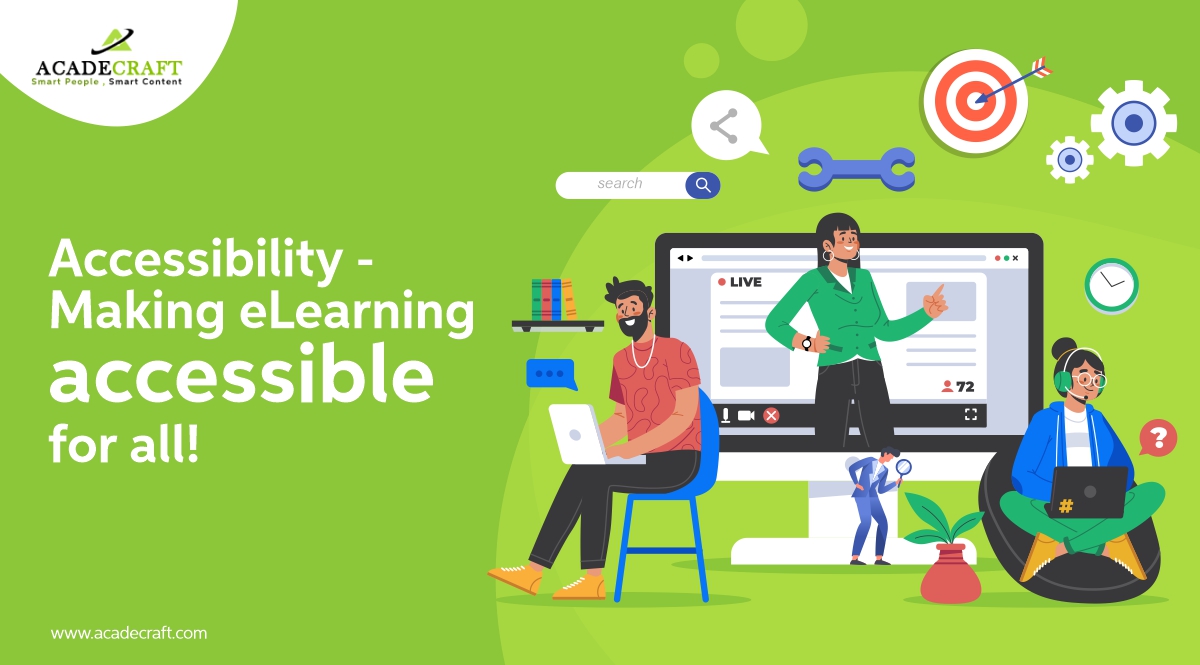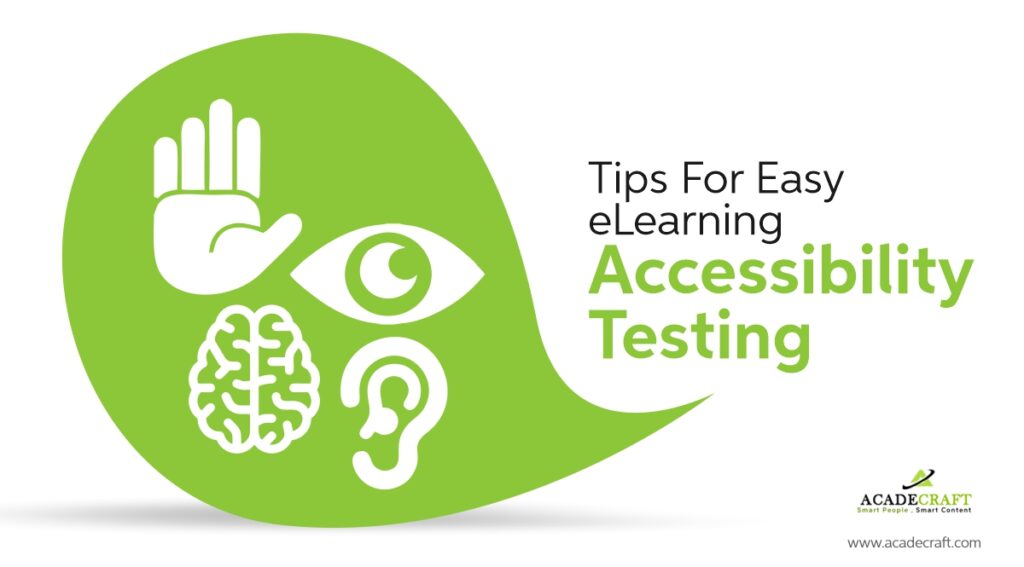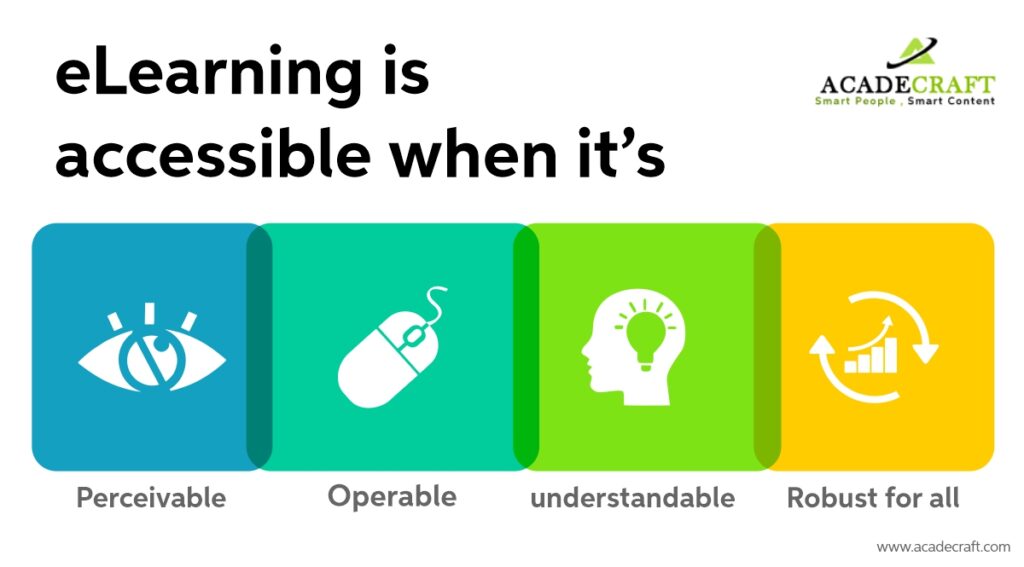
?Accessibility? - this term has now become a common topic of discussion in the eLearning industry across the US. Statistics show that over 26% of the nation?s population suffers from a disability. In this scenario, making eLearning accessible to the disabled has become a daunting yet essential task.?But, many eLearning companies are confused on how to approach it. They often start adding accessibility features to their eLearning platforms and courses randomly, without prior accessibility testing services. That is why they often end up adding the wrong features. Due to this reason, they often end up adding and removing the features multiple times.?
If your eLearning company is also confused about approaching accessibility while developing eLearning platforms and content, this blog is here to help you out! In this blog, we will cover:
So, let?s begin!?

In accessibility testing, users test the accessibility features of your best elearning platforms and courses. These users are primarily real students suffering from disabilities. They use your platform for a considerable period, and the experts track their progress. It is a long-term process. But, it is the most prominent method of identifying the critical accessibility issues on your eLearning platform.?
When students test the platform, many issues we could not think of will come to light. Hence, the platform will now have all the necessary features to combat real-life accessibility challenges.
In Accessibility Audit, the audit experts test every website feature. They can test them either manually or often use tools for the same. This process is often done to properly document the present accessibility features, their current working status, the missing features, and the features that need to be improved.
It usually does not involve common people. It is more like technical testing for the accessibility of the platform.
The accessibility testing process is about the real-life consumer experience. But, in contrast, the accessibility audit process is a bit multi-dimensional and technical. Let's understand the difference between them a bit more appropriately.
| Accessibility Testing | Accessibility Audit |
| involves real-world consumers, meaning real people with disabilities. | It involves experts testing the accessibility features of the website. |
| It does not include any tool-based testing. It includes real-life experience-based testing. | It can be done either using tools or manually by the experts. |
| If done correctly, it will give more superior outcomes. | It is suitable for short yet accurate testing, especially for a specific or single accessibility feature. |

Making eLearning courses accessible to people with disabilities will directly increase the learner base of the eLearning companies by over 20%. By doing so, the eLearning companies will gain more learners. And the learners with disabilities will be able to participate in online courses with other students. Hence, the distinction between regular education and special education will decrease.
But, for that to happen effectively, the eLearning companies should test the accessibility features of the website very carefully. Otherwise, the learners might struggle while using the website.
If the testing is poor, the learner?s experience will also be impacted. It might lead to a bad rating and reputation of the course. That is why accessibility testing for eLearning courses is a compulsion.
If you have already developed an eLearning course, you first need to start with a formal accessibility audit of your platform and course content.
Second, you need to appropriately your website adhere to the web accessibility guidelines. It is a necessary step. Non-adherence to web content accessibility guidelines, ADA , AODA, and Section 508 guidelines can land you in legal trouble.
Also Read: What is ADA Compliance?
Third, ensure that the alt text used in the website?s images is precise, apt, and proficient to the learners? understanding.
Fourth, site navigation plays an important role too. While you test accessibility for the website, make sure to look for a smooth flow of content. If the users can?t hover from one part to another with ease, it impacts the learners? experience.
Finally, if your website has videos, ensure they are short, crisp, accurate, and authentic. Your eLearning course will be available to a wide range of audiences. Make sure you don?t disappoint.
Accessibility testing plays a very crucial role in eLearning development. If your course is not inclusive to each learner across the globe, you?ll incur losses.
A huge part of the population has some form of disability. Making the website accessible opens up your audience base and reduces the gap between learners with disability and regular learners.
Acadecraft is one of the best places where you can have your website tested! We?ll take care of accessibility audits, alt texts, videos, PDF remediation, and several other factors. We have accessibility experts who ensure accurate content within no time!
Share